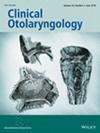Can Initial Management of Paediatric Acute Rhinosinusitis With Orbital Complications Predict Future Outcomes? A Cohort Study
Abstract
Background
Approximately 6%–8% of children diagnosed with acute rhinosinusitis (ARS) would experience complications, primarily periorbital or orbital complications (OC). Both conservative and surgical management have been shown to be successful, and the choice of proper management depends on the presentation and the surgeon's discretion. The objective of this study was to describe the long-term outcomes of each modality on future ARS episodes, with or without OC.
Methods
This retrospective study included patients < 16 years old with OC-ARS admitted to a tertiary hospital from 2002 to 2019. Patients were divided into groups based on treatment: conservative and surgical. Outcomes measured included recurrence of ARS, OC-ARS and future hospitalisations or surgeries due to ARS over a 5-year follow-up period.
Results
Among 213 children diagnosed with OC-ARS, 192 (90.1%) were treated conservatively and 21 (9.9%) surgically. Most surgeries were performed endoscopically (16/21, 76.2%). Surgically treated children were older and had significantly higher rates of proptosis, impaired eye movement and higher Chandler scores at presentation (p = 0.034, p < 0.001, p < 0.001, p < 0.001, respectively). Overall, recurrent ARS rates were 10.3%, with significantly higher rates in the surgical group compared with the conservative group (28.6% vs. 8.3%, p = 0.012). While the surgical group did not have a significantly shorter interval to recurrence compared with the conservative group (8 vs. 15 months, p = 0.8), a significant risk reduction over time was observed (OR 6.22 and 3.71 after 1 and 5 years, respectively, p < 0.005).
Conclusion
Most children with OC-ARS recover fully without future sequela. However, children that needed surgical treatment during the acute phase of OC-ARS, are at greater risk for future ARS episodes, particularly within the first-year post-surgery.


 求助内容:
求助内容: 应助结果提醒方式:
应助结果提醒方式:


